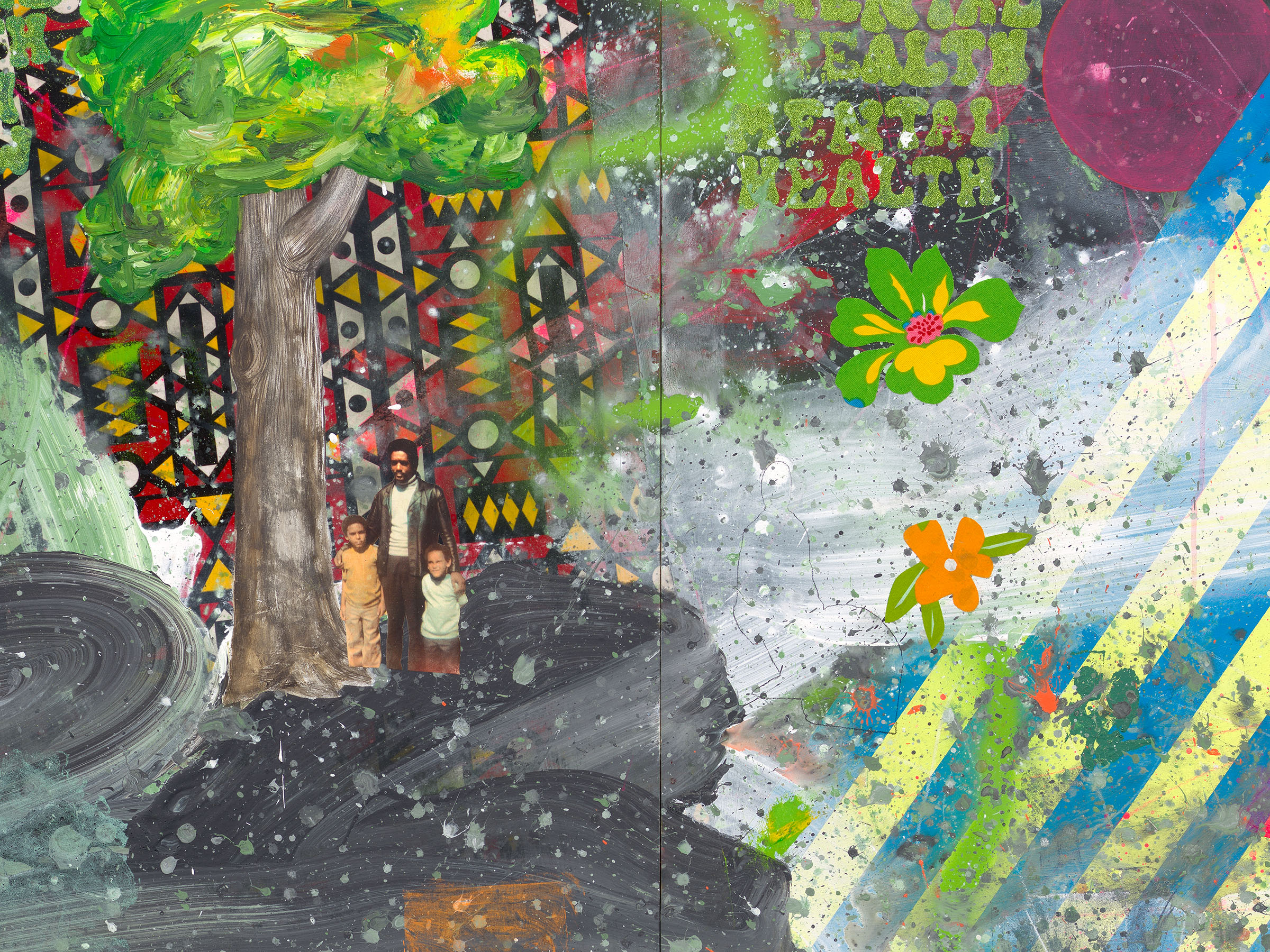Casey Kaplan

In Prismatic Paintings, David Huffman Pays Homage to Black Panther Protests of His Youth
By Andy Battaglia | Published May 17, 2024
Anyone who has been affected by the protests roiling college campuses in recent weeks—which is to say everyone, given the range of emotions they elicit and their magnitude in terms of reverberation and reach—would be advised to visit David Huffman’s current show at Casey Kaplan gallery in New York. A short walk away from the Fashion Institute of Technology, where a student encampment was broken up by the NYPD just last week, a selection of paintings that the artist calls “social abstractions” affirms the ways that protests from decades ago can resonate today.
Deeply personal but powerful beyond the bounds of his own experience, Huffman’s densely layered paintings draw on aspects of his childhood during the Black Power Movement in the 1960s and ’70s. Growing up in Berkeley, California, he was steeped in the activism of the Black Panthers; his mother, Dolores Davis, marched with the group and designed a slinking panther logo and a “Free Huey [Newton]” flag for them in 1968.
Allusions to those early years abound in paintings that can be read as diaristic. Eucalyptus (2024) includes part of a photograph (cut out and affixed to the canvas) of a very young Huffman and his brother standing alongside Black Panthers cofounder Bobby Seale. Other paintings are marked with stenciled repetitions of words like “mental health,” “homeless,” and “payday loans”—socioeconomic causes relevant both then and now. In its upper right corner, amid swirls and scrapings of paint, Mintaka (2023) features 13 iterations of the black panther logo that the artist’s mother designed.
Other references are just as personal but more open-ended. Many of the works include collaged swaths of African fabric that Huffman has collected over the years, with a mix of amorphous and geometric patterns that he sometimes adorns with additional squiggles and lines from his own hand. An especially dynamic part of Tasmanian Ghetto (2023), with electric orange set against a deep blue, was created by spray-painting a basketball net set against the canvas. A flurry of stenciled sphinx heads in Calypso (2023) signals the ancient Egyptian origins of so much culture. And then there are several Afrofuturist allusions to outer space: cut-outs of planets float within a few of the works, and part of Eucalyptus (the painting with the photo of Bobby Seale) is marked with the letters “ZR,” a reference to the Zeta Reticuli star system that figures in numerous tales of UFOs and alien abduction.
Familiarity with Huffman’s biography and personal inclinations helps bear out the activist allegiances in his work, but the paintings themselves communicate it in no uncertain terms too. All of them roil and teem, created in what seem to have been thrilling bursts of energy and animated by a frenetic spirit that informs a mix of determination and purpose, messiness and garishness. The look of them evokes the mind-expanding legacies of both the psychedelic counterculture and the activist uprisings that marked Huffman’s youth. The paintings’ backstories resonate with the unrest of the present, but their lingering effects make the current political climate feel less fleeting and more like an ever-present condition always in need of attention.
View the article online here.